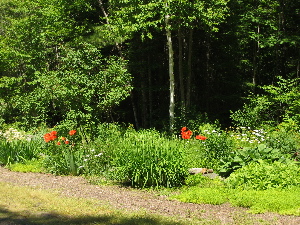PHYTOREMEDIATION
This morning I was reading my newest issue of "Business 2.0". In it there is an article which is titled, "8 Technologies for a Green Future".
One of those 8 is called "Toxin-eating Trees". That caught my attention immediately! Anyway, reading that article was interesting. I know there are grasses Water Treatment Plants use to help them reconstitute water. I also know that plants can remove harmful chemicals from soil. When I toured our local Water Treatment Plant, they showed us some of those grasses, but said that the heavy metals they remove are retained in the plant, making them toxic to any grazing animals that partake of them. That seems to negate their usefulness, as far as I'm concerned. It also seems to indicate that it's presence in the "food chain" might be of concern.
However, it does appear that the science community is taking this seriously, and we should as well!
I have a few web-sites that you will find of interest if this topic is close to your "green" heart.
This first one, a Fact Sheet from Michigan State University, gives you definitions, pros, and cons, and all kinds of explanations.
The next one, is a USDA article about soils and plant phytoremediation for contaminants. It too probably tells you enough to get you up to speed on this topic.
The last one is a Blog from that "Business 2.0" magazine I told you about. It's called Green Wombat. (Don't ask) It seems that phytoremediation is not one of the ones he addresses, but it's interesting to read anyway!
Maybe after you check these sites out, you may be more interested in this topic. As a gardener, it's one we should at least know a little bit about...so go get educated! It'll give you something to do on this wintery day!




